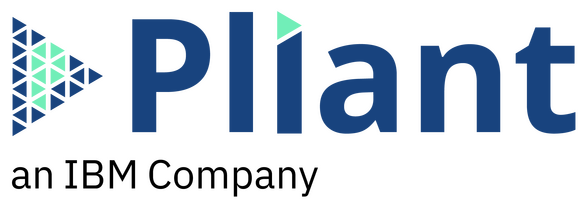Customer
Fortune 10 Health Care Provider
Employees
200,000+
IT Employees
12,000
Locations
~10,000
HQ
United States
Revenue
$250+ billion
Background
This Pliant customer has made a name for itself in the healthcare provider space, providing healthcare for millions and earning a place on the Fortune 10 list. Over the course of the last twenty years, the business has made strategic investments in improving access and coverage for its customers, transforming from a once traditional provider to a modern, digital player. This was on full display when the customer recently made an acquisition that nearly doubled their reach and coverage, all in the name of disrupting and improving the way people access healthcare in the United States.
The Challenge
Change is always difficult, and when transforming health care as we know it is coupled with making a multi-billion merger a success, it’s even harder. Despite the customer’s continued march towards digital reinvention, the business retailed much of its traditional DNA. Efforts were undertaken to improve modernization and innovation, but integrating two fundamentally different IT organizations proved to be a challenge.
One of the biggest challenges was left to the connectivity unit — the “first ones in to a branch location, and the last ones out.” 350 strong, the team focuses on Data Center networking, routing switching, firewalls and more. Their charter included providing access to secure WiFi and branch office WAN technologies from Cisco Meraki. These technology rollouts were table stakes for enabling the kind of experience the business envisioned when looking to make health care better and more cost-effective for customers.
In order to meet the requirements of these lofty goals, the company needed to transform their clinical locations, which required highly advanced digital innovation, and a cultural shift to get there.
Despite years of investment in innovation, the thousands of talented IT engineers within the organization were focused on traditional hands-on networking. Under its previous charter, the strategy of arming engineering teams with enough human resources to get the job done worked well. Yet, in this new and highly dynamic post-merger environment, there simply weren’t enough people to meet the demands of the physical, digital, and cultural transformations underway.
The Solution
The business’ connectivity team lead, who oversees a 350-person strong organization, joined the business through the acquisition. As a result of his experience, he understood well the differences between a traditional IT organization and one focused on providing highly complex and interdependent care for millions of people. He knew the answer to the issue at hand — one where workforce and requirements of scale were mismatched — would only be solved through automation.
The customer was looking for a flexible, vendor agnostic, low-code infrastructure automation provider and he found one with Pliant. Pliant’s IT automation capabilities enabled network engineers to refocus their efforts on value-add activities to dramatically improve the organization’s bottom line.
Pliant enables the IT team to use low-code/no-code drag and drop blocks to quickly and efficiently automate workloads without manual input. This enables a broader set of employees with little to no programming experience to get work done more efficiently, and with fewer headaches and backlogs.
Pliant has completely taken over all Cisco Meraki MX Branch Configuration (WiFi/SD-WAN) provisioning. How does this work? A third party vendor installs hardware and sends the team a serial number at which point Pliant takes over and finishes the rest of the configuration. This allowed the organization to remove an entire FTE from the project and refocus that network engineer on more important business initiatives.
“We had a lot of tools that did automation, but none of them fully met our needs,” said the team lead. “Some were on- prem only, many required relatively advanced and time-consuming coding, while others still were domain- or product- specific. I was looking for a solution like video editing software where you grab icons off the menu, draw lines between them, and press play.”
Results to Date
- Reduced configuration time from hours to seconds.
- Connectivity team saved valuable IT human capital and resources.
- Enabled a broader set of employees without the need for code work.
- Due to Pliant’s extreme simplicity and speed, gained capability to build ‘disposable’ automation — flexible, goal-oriented automation to help the team accomplish a goal that can then be thrown out once the goal is achieved.
What’s Next
The organization intends to leverage Pliant to serve as an API controller, where Pliant will serve up a library of APIs to the rest of the organization when it comes to things that are connectivity in nature, such as opening or closing buildings — wifi, security, networking and more.
Pliant will maintain a global database of all locations, and publish in different form factors including an API. As the organization is moving away from ODBC tying things together, other automation tools can look up data via these JSON APIs.
Pliant will also take over tool onboarding. Each time the organization needs to add technology into SolarWinds, SevOne, etc., they will be able to automate onboarding via Pliant automation. Currently, it takes 6+ hours to manually onboard a device. With Pliant, the time to onboard will be reduced to 17 seconds. The organization has 18,000 network devices that will be replaced on a 5-year cycle.
“We get a lot out of Pliant and we keep getting more. We’re super excited for the capability to execute quickly. We’re becoming more powerful by using Pliant to our advantage and that’s all that matters. What’s really fun about the platform today is it’s really developer/user-centric. And that’s pretty cool when you’re in development or collaboration mode.”

